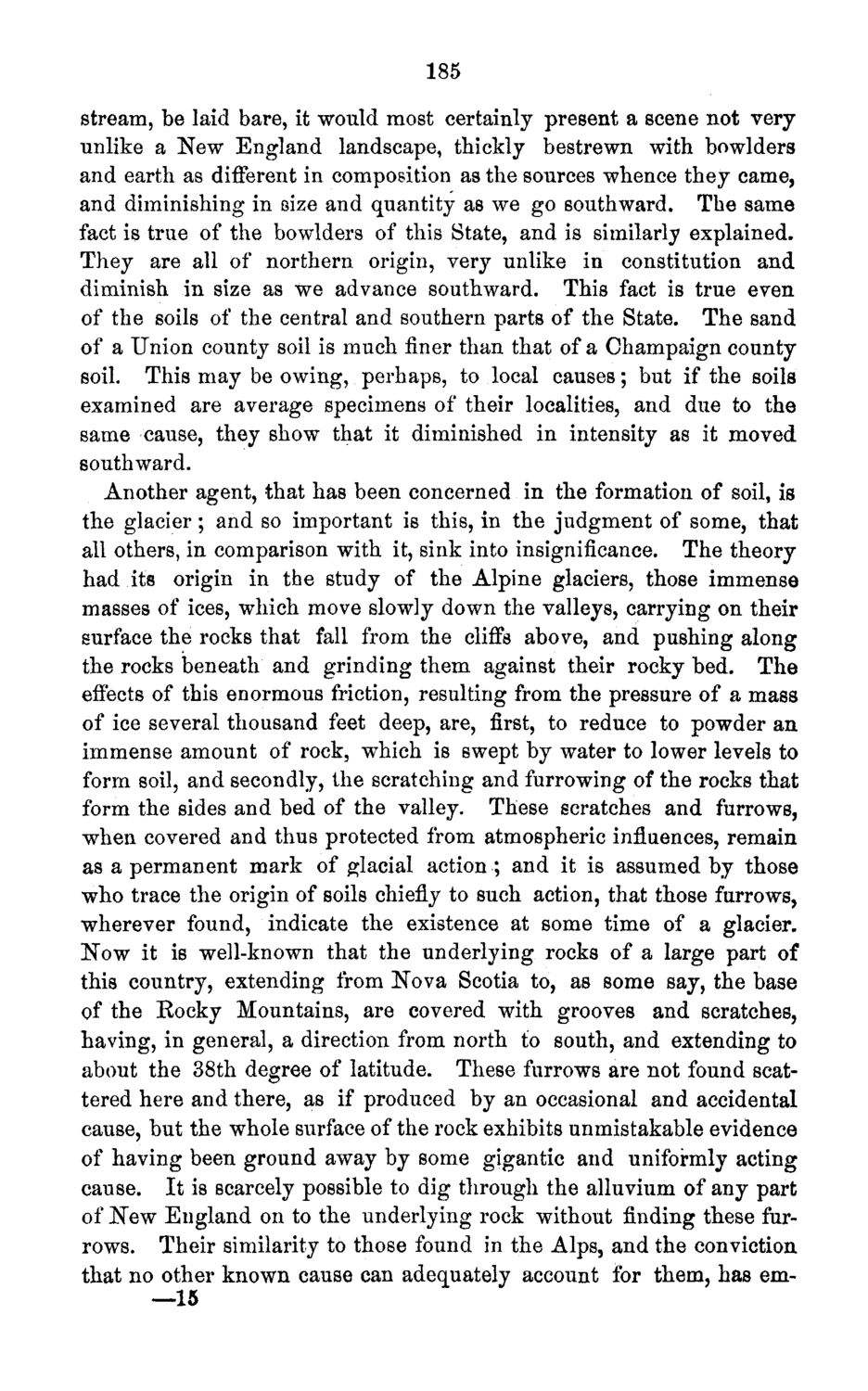| |
| |
Caption: Board of Trustees Minutes - 1871
This is a reduced-resolution page image for fast online browsing.

EXTRACTED TEXT FROM PAGE:
185 stream, be laid bare, it would most certainly present a scene not very unlike a New England landscape, thickly bestrewn with bowlders and earth as different in composition as the sources whence they came, and diminishing in size and quantity as we go southward. The same fact is true of the bowlders of this State, and is similarly explained. They are all of northern origin, very unlike in constitution and diminish in size as we advance southward. This fact is true even of the soils of the central and southern parts of the State. The sand of a Union county soil is much finer than that of a Champaign county soil. This may be owing, perhaps, to local causes; but if the soils examined are average specimens of their localities, and due to the same cause, they show that it diminished in intensity as it moved southward. Another agent, that has been concerned in the formation of soil, is the glacier; and so important is this, in the judgment of some, that all others, in comparison with it, sink into insignificance. The theory had its origin in the study of the Alpine glaciers, those immense masses of ices, which move slowly down the valleys, carrying on their surface the rocks that fall from the cliffs above, and pushing along the rocks beneath and grinding them against their rocky bed. The effects of this enormous friction, resulting from the pressure of a mass of ice several thousand feet deep, are, first, to reduce to powder an immense amount of rock, which is swept by water to lower levels to form soil, and secondly, the scratching and furrowing of the rocks that form the sides and bed of the valley. These scratches and furrows, when covered and thus protected from atmospheric influences, remain as a permanent mark of glacial action ; and it is assumed by those who trace the origin of soils chiefly to such action, that those furrows, wherever found, indicate the existence at some time of a glacier. Now it is well-known that the underlying rocks of a large part of this country, extending from Nova Scotia to, as some say, the base of the Rocky Mountains, are covered with grooves and scratches, having, in general, a direction from north to southland extending to about the 38th degree of latitude. These furrows are not found scattered here and there, as if produced by an occasional and accidental cause, but the whole surface of the rock exhibits unmistakable evidence of having been ground away by some gigantic and uniformly acting cause. It is scarcely possible to dig through the alluvium of any part of New England on to the underlying rock without finding these furrows. Their similarity to those found in the Alps, and the conviction. that no other known cause can adequately account for them, has em—15
| |